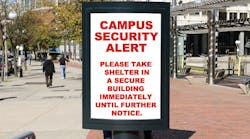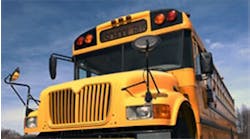When a crisis befalls a school campus, the ability of school officials and emergency responders to communicate with students and staff and with one another is critical. Conveying information quickly and clearly to those in danger can save lives.
A school’s emergency communications system should be equipped with many features so that it can perform effectively in a crisis. The National Electrical Manufacturers Association (NEMA) has compiled standards to help schools decide what kind of emergency communications systems should be installed.
Some of the design factors that schools should consider, NEMA says:
•The audio level of emergency notification should be significantly greater than the ambient noise in a room. The design should take into account the size of a room, the number of people that could be in the room, and any equipment that could add to the noise. A centrally situated speaker is generally better than a speaker placed at the front of a classroom or auditorium. Multiple speakers, each operating at lower sound pressure levels, also provide more direct sound and generally better intelligibility than a single speaker. Also, it is often easier for people to distinguish and understand emergency notifications that come from speakers in the ceiling.
•Emergency services such as FEMA (Federal Emergency Management Agency) and the National Oceanic and Atmospheric Administration provide emergency broadcasts of weather and other warnings that often are included as part of local public address and emergency voice notification systems. Schools should consider using these services, especially in areas subject to severe weather.
•The core equipment used by the emergency communications system should be exercised daily in routine situations. Use of microphones, consoles, amplifiers, central equipment, speakers and call switches should be part of the daily routine of school communications,” the standard says.
•A school facility should have the ability to page to every area of the campus, inside as well as outdoors.
•To carry out a school lockdown and have each individual classroom door locked, a communications system must have hands-free, two-way communications to every room. This enables a school to announce the lockdown and to confirm that every classroom has been able to comply or is receiving assistance.
•An emergency communications system should have features that address the needs of persons with disabilities. “Audible notification only may be considered insufficient when considering the needs of a person with a hearing disability,” the standard says. “Visual indicators including message displays may be considered to reduce risk.”
•A system and its components must be protected so people cannot abuse or tamper with it. “Different levels of physical protection must be considered for different components,” the standard says.
Before choosing a emergency communications system, a school should conduct a risk assessment to determine what should be included in the sysem, NEMA says.


